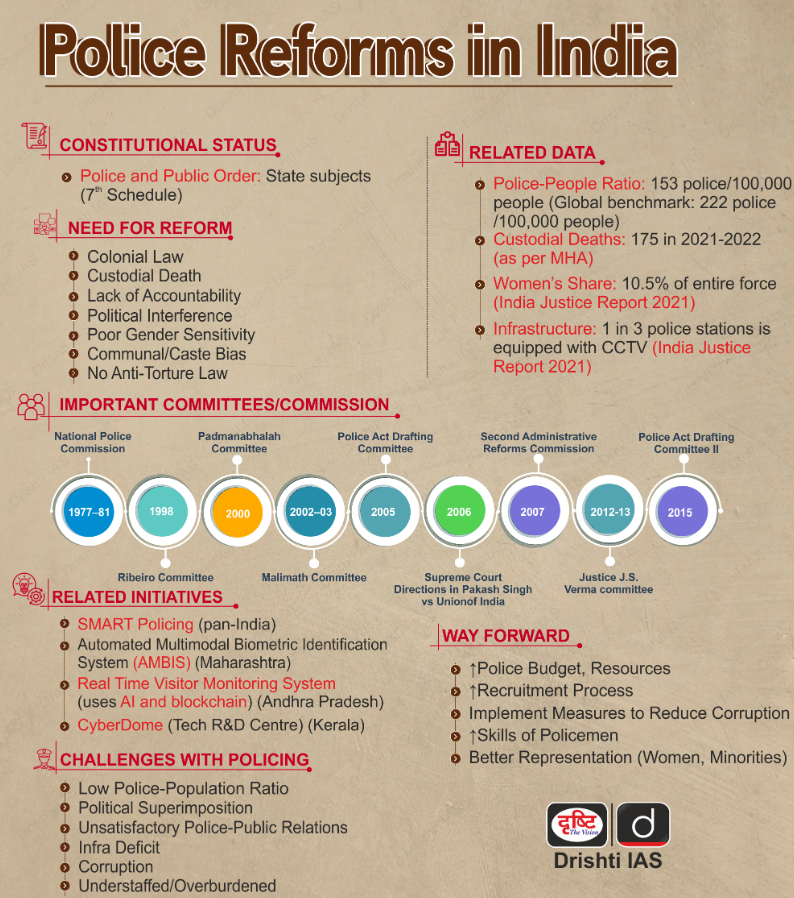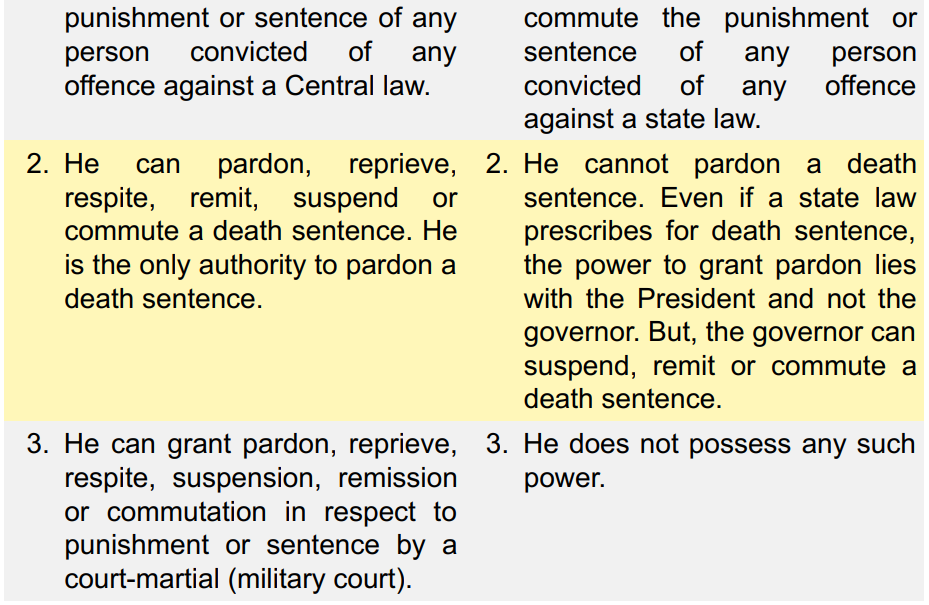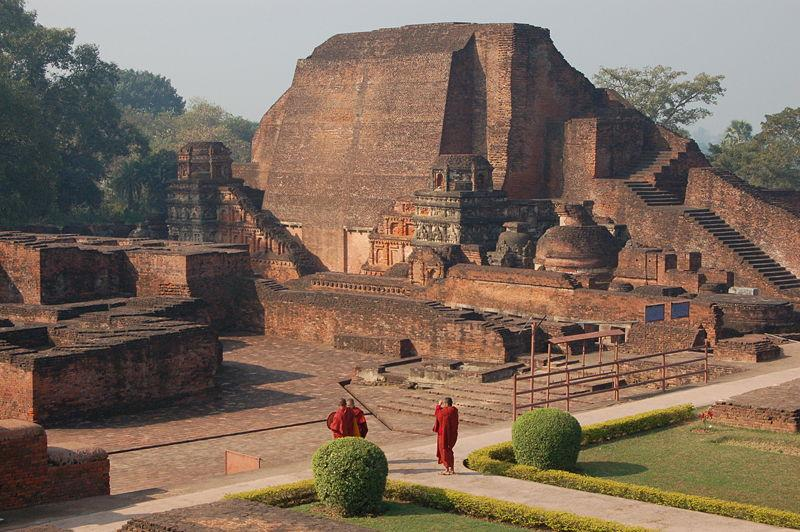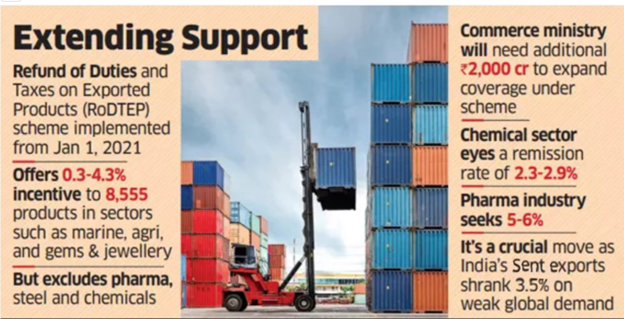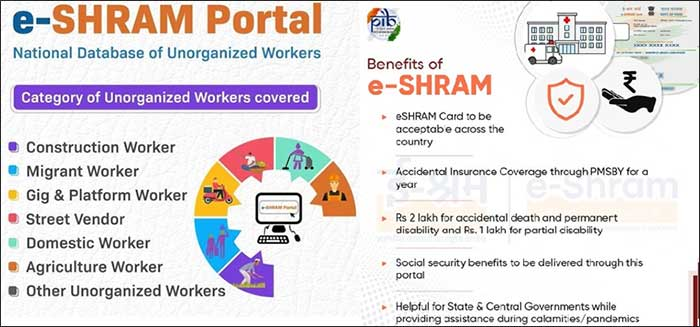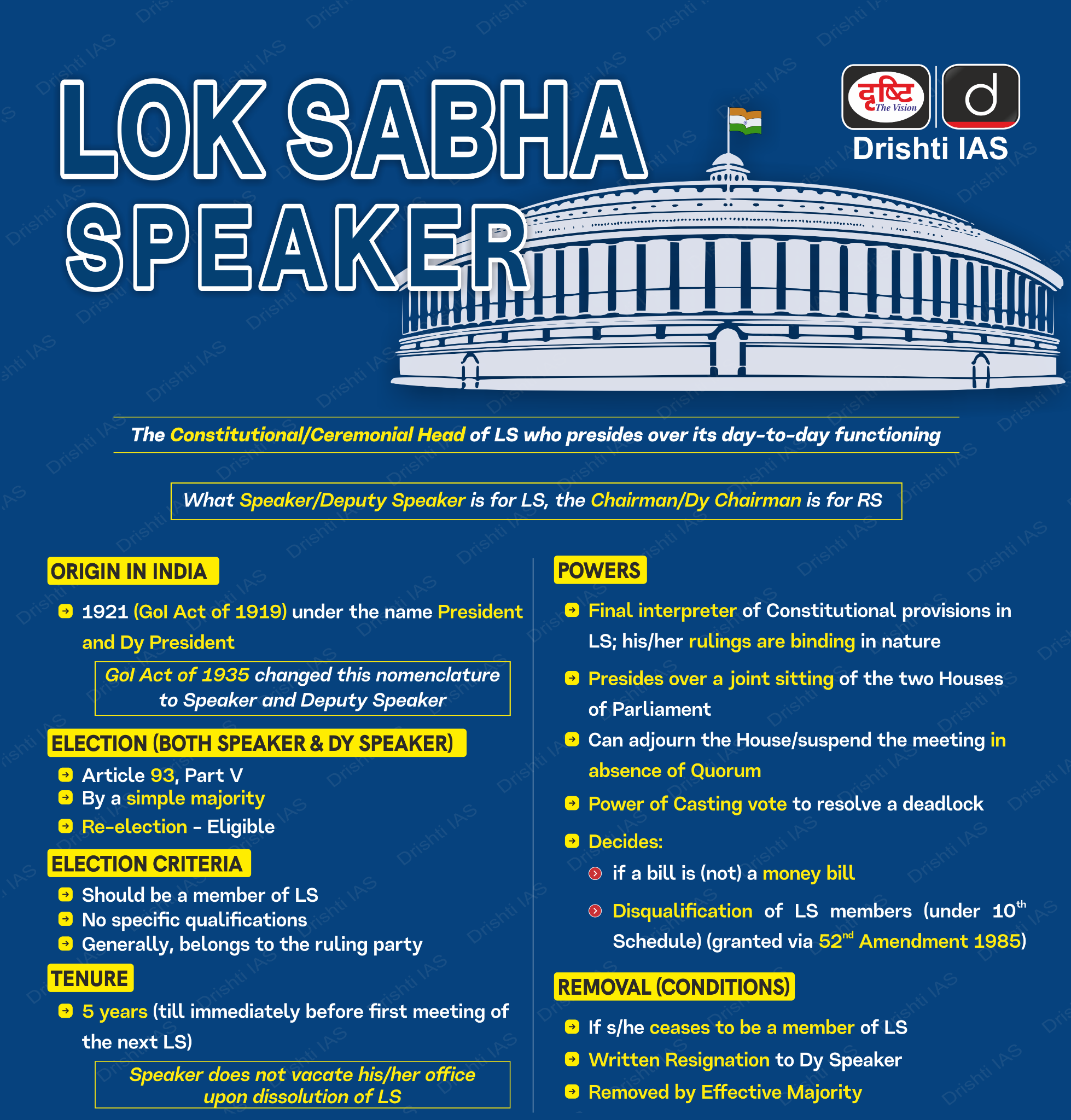Governance
Criminal Justice System
For Prelims: Article 246, State List, Criminal Procedure Code, 1973, Sessions Judge, Prison System, Vocational Training, High Courts, Supreme Court, Fastrack Courts, Human Rights, Bail, Law Commission of India, Legal Aid.
For Mains: Flaws involved in India’s Criminal Justice System and measures to alleviate them.
Why in News?
Recently, a fabricated rape accusation and sunsequent imprisonment revealed a range of systemic shortcomings in our law enforcement machinery and social complexities that demand urgent attention.
How is the Criminal Justice System (CJS) in India?
- About:
- The criminal justice system of any state is the set of agencies and processes established by governments for administration of criminal justice aimed at controlling crime and imposing punishment on persons who violate the law.
- India’s criminal justice system is based on the Indian Penal Code (IPC) enacted in 1860.
- Article 246 of the Constitution of India places the police, public order, courts, prisons, reformatories and other allied institutions in the State List.
- However, the Union laws are followed by the Police, Judiciary, and Correctional Institutes, which form the basic organs of the criminal justice system.
- Structure of the CJS: It consists of the four main pillars.
- Investigation by Police: Section 161 of the Criminal Procedure Code, 1973 allows the investigation officer to question anyone who may know about the case and write down their statement.
- Prosecution of Case by the Prosecutors: Prosecutors charge an accused with a crime and try to show that he/she is guilty in a court of law.
- Determination of Guilt by the Courts: The court pronounces the sentence using its discretion, considering aggravating and mitigating factors, the offender's background, and the likelihood of their reform.
- Correction through the Prison System: The imprisonment in India is used for the reformation and rehabilitation of the prisoner through education, labour, vocational training and yoga and meditation.
What are the Challenges Involved in the Criminal Justice System in India?
- Pendency of Cases: As of July 2023, over 5 crore cases were pending across all courts in India.
- Of them, 87.4% are pending in subordinate courts, 12.4% in High Courts, while nearly 1,82,000 cases have been pending for over 30 years. The Supreme Court had 78,400 pending cases.
- Judicial Vacancies: Despite a longstanding target of 50 judges per million people, India has only 21 judges per million people, laying the foundation for delays.
- Slow Progress in Fastrack Courts: The functioning of fast-track courts has been far from ideal.
- New courts with the necessary infrastructure and dedicated judges are not set up for fast-track purposes.
- Instead, existing courts are typically designated as fast-track courts, requiring judges to manage their regular caseloads in addition to these expedited cases.
- Abuse of Power by Police: Police are often accused of unwarranted arrest, unlawful imprisonment, wrongful search, harassment, custodial violence, death etc.
- In addition, police are continuously acquiring more and more power on the grounds of prevention laws.
- Complex Mechanism: Present day justice mechanisms are too complex and it is completely far from the marginalised people.
- In a system focused on institutional arrangements rather than building capacity, vulnerable sections of society will inevitably be marginalised.
- Perceived Biases: In comparison to their percentage in the total population, Adivasis, Christians, Dalits, Muslims and Sikhs are all well over-represented in Indian prisons.
- Violations of Human Rights in Prison: In the name of extracting confessions and investigating crimes, authorities use physical force upon the prisoners.
- Torture is also inflicted on women in the form of custodial rape, molestation and other forms of sexual abuses.
How can the Criminal Justice System in India be Reformed?
- Bail Reforms: “Bail is rule and jail is an exception” is a judicial principle that was laid down by the Supreme Court during a landmark judgment of State of Rajasthan v. Balchand alias Baliya in 1978.
- In its 268th Report, the Law Commission of India stressed that urgent measures need to be taken to curtail the length of detention, and concluded that the law relating to bail must be revisited to prevent this.
- Reviving Fastrack Courts: Expeditious disposal of long pending sessions cases should be done to make these courts “truly fast-track”.
- Legal Aid Reform: Training, mentoring and building capacities of young professionals for improving quality of socio-legal services to make CJS more effective.
- Filling Judicial Vacancies: Filling judicial vacancies effectively is crucial for maintaining a functional and fair judicial system. For this, All India Judicial Service (AIJS) can be explored for the recruitment of judges at the level of additional district judges and district judges.
- Application of AI in Criminal Case Management: AI can be used to help judges make decisions about bail, sentencing, and parole.
- AI can be used to assess the risk of recidivism for offenders.
Related initiatives Taken by Government:
What Commissions have been set up to Reform CJS?
- National Police Commission (NPC): It recommended that there must be a judicial enquiry in cases of custodial death or rapes.
- Malimath Committee: It recommended that there is a need to have a separate police force for maintaining law and order and crime investigation.
- All India Jail Reforms Committee (Mulla Committee): It emphasised the recruitment of proper and trained staff for the administration of jails and, for this purpose, a correctional service should be established.
- Krishnan Iyer Committee: It recommended the appointment of women staff in the police for handling women and child offenders.
What are Judicial Pronouncements Related to Reformation of CJS?
- Prakash Singh v. Union of India Case, 2006: The Hon’ble Supreme Court stated that a state security commission must be established in each state to keep a check on the work of the police and observe that there is no influence.
- S.P. Anand v. State of Madhya Pradesh Case, 2007: Prisoners have basic rights to a healthy life even though their right to liberty and free movement is restricted.
- State of Gujarat v. High Court of Gujarat Case, 1988: It was held that reasonable wages must be paid to prisoners in jail for the work or labour they have done.
- Hussainara Khatoon v. Home Secretary, State of Bihar Case, 1979: Keeping the undertrials in jail for a longer period than their punishment is a clear violation of their fundamental rights guaranteed under Article 21.
- Prem Shankar Shukla v. Delhi Administration Case, 1980: The practice of handcuffing is inhuman, unreasonable and harsh, and thus, an accused person must not be handcuffed in the first instance.
Conclusion
The Indian criminal justice system faces challenges such as a large backlog of cases, inefficiency, lack of resources, poor infrastructure, and insufficient training for personnel. However, efforts are being made to reform and improve the system, particularly to ensure that marginalised communities have better access to justice.
|
Drishti Mains Question: Q. The reform of the criminal justice system in India has become imperative especially considering the recent failures and shortcomings within the system. Do you agree? |
UPSC Civil Services Examination, Previous Year Question:
Q. Critically examine the Supreme Court’s judgement on ‘National Judicial Appointments Commission Act, 2014’ with reference to appointment of judges of higher judiciary in India. (2017)

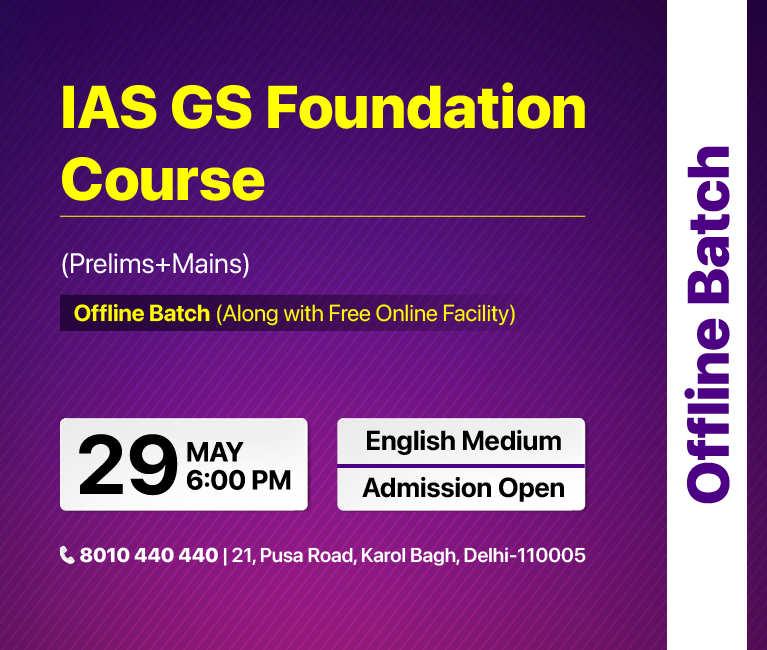
Indian Polity
Mercy Petition
For Prelims: President, Mercy Petition, Article 72, Article 161, Judicial Review, Supreme Court (SC), Pardoning Power, Death Penalty, Law Commission, Fundamental Right, Article 21, Commutation, Reprieve, Remission, Respite, Indian Judiciary
For Mains: Issue of Mercy Petition
Why in News?
Recently, the President of India has denied the mercy petition of a Pakistani national sentenced to death for the 2000 Red Fort terrorist attack.
What is Mercy Petition?
- About:
- A mercy petition is a formal request made by someone who has been sentenced to death or imprisonment seeking mercy from the President or the Governor, as the case may be.
- The idea of Mercy Petition is followed in many countries like the United States of America, the United Kingdom, Canada, and India.
- Everyone has the basic right to live. It is also mentioned as a fundamental right mentioned under Article 21 of the Indian Constitution.
- Philosophy behind: The philosophy behind the pardoning powers in India is rooted in the recognition that no judicial system is infallible and the need for a mechanism to rectify potential judicial errors.
- Rectification of Judicial Errors: This safeguard acts as a corrective measure against potential miscarriages of justice.
- For example, in 2012, 14 judges from the Supreme Court and High Courts, in separate letters to the President of India, highlighted cases from the 1990s where courts had wrongfully awarded capital punishment to 15 individuals, two of whom were subsequently executed.
- Maintaining Public Trust: One of the core objectives of the pardoning power is to uphold and maintain the trust of the common man in the criminal justice system.
- Rectification of Judicial Errors: This safeguard acts as a corrective measure against potential miscarriages of justice.
- Constitutional Framework:
- As per the Constitutional framework in India, a mercy petition to the President is the last constitutional resort a convict can take when he is sentenced by a court of law. A convict can present a mercy petition to the President of India under Article 72 of the Constitution of India.
- Similarly, the power to grant pardon is conferred upon the Governors of States under Article 161 of the Constitution of India.
|
Article 72 |
Article 161 |
|
|
- Process of making a Mercy Petition:
- There is no statutory written procedure for dealing with mercy petitions, but in practice, after extinguishing all the reliefs in the court of law, either the convict in person or his relative on his behalf may submit a written petition to the President.
- The petitions are received by the President’s secretariat on behalf of the President, which is then forwarded to the Ministry of Home Affairs for their comments and recommendations.
- Grounds for filing Mercy Petition:
- The mercy or clemency is granted on the grounds based on his health, physical or mental fitness, and his family's financial conditions considering if he is the only sole earner of bread or butter or not.
- The Supreme Court in cases such as Shatrughna Chauhan vs Union of India (2014) held that Right to seek for mercy under Article 72/161 of the Constitution is a constitutional right and not at the discretion or whims of the executive.
- The mercy or clemency is granted on the grounds based on his health, physical or mental fitness, and his family's financial conditions considering if he is the only sole earner of bread or butter or not.
- Judicial Review:
- SC in several cases such as Maruram vs UoI, Epuru Sudhakar vs State of Andhra Pradesh, and Kehar Singh vs UoI has stated that judicial review of the exercise of pardoning power is possible but on the limited ground.
- The court has stated the following provision for judicial review of clemency power:
- Powers have been exercised without application of mind
- Exercised with Malafide intentions
- Relevant material was kept out of consideration
What are some of the Important Judgments Related to Mercy Petition?
- Bachan Singh v. State of Punjab: In 1980, the Supreme Court upheld the constitutionality of the death penalty, but established important guardrails. “Judges”, the court said, “should never be bloodthirsty”, and the death penalty should not be awarded “save in the rarest of rare cases when the alternative option is unquestionably foreclosed”, and all possible mitigating circumstances have been considered.
- The court has reaffirmed the “rarest of rare” standard in several decisions since then.
- Maru Ram v. Union of India (1981): The SC held that the power to grant pardon under Article 72 is to be exercised on the advice of the Council of ministers.
- Kehar Singh v. Union of India (1989): The SC had examined the scope of the President’s pardoning power under Article 72 in detail.
- In the Kehar Singh case, the court stated that the convict does not have the right to an oral hearing to mercy petition.
- Shatrugan Chauhan v. State of U.P. (2014): In this judgement the SC held that inordinate delays in deciding mercy petitions can lead courts to commute death sentences.
- Law Commission Report: The Report of the 262nd Law Commission published in 2015 recommended the “absolute abolition” of the death penalty “for all crimes other than terrorism-related offences and waging war”.
What are the Different Types of Pardoning Power?
|
Type of Pardoning |
Description |
Example |
| Power | ||
|
Pardon |
Completely absolves the convict of the crime, erasing the conviction and all associated penalties. |
The President grants a pardon to a person wrongly convicted of treason. |
|
Commutation |
Substitutes a harsher punishment with a lighter one. |
The President commutes a death sentence to life imprisonment. |
|
Remission |
Reduces the period of the sentence without changing its nature. |
The Governor remits one year from a two-year sentence of rigorous imprisonment. |
|
Reprieve |
Temporarily postpones the execution of a sentence, usually for a short period. |
The President grants a reprieve to a condemned prisoner to allow time for the filing of a mercy petition. |
|
Respite |
Similar to reprieve, but for a longer period and often for medical reasons. |
The Governor grants a respite to a terminally ill prisoner to allow them to spend their final days at home. |
What do the Laws of other Countries Provide?
- USA: The Constitution of America gives the President the similar powers to grant reprieves or pardon for offences under Federal law, except in cases of impeachment. However, in cases of violation of state law, the power has been given to the concerned Governor of the state.
- UK: In the UK, the Constitutional monarch can pardon or reprieve for offences on ministerial advice.
- Canada: The National Parole Board under the Criminal Records Act is authorized to grant such reliefs.
Conclusion
- The way forward lies in striking a balance. Measures promoting transparency, such as clear guidelines for considering petitions and a defined timeframe for decisions, could enhance public trust. Additionally, ensuring legal representation for mercy petition applicants would strengthen the process.
- Ultimately, the mercy petition system serves a vital purpose in the Indian justice system. By acknowledging its strengths and addressing its shortcomings, India can ensure a more humane and effective application of this extraordinary power..
|
Drishti Mains Question: Q. Discuss the significance and challenges associated with the exercise of mercy petitions by the President of India in the context of capital punishment |
UPSC Civil Services Examination, Previous Year Question
Prelims:
Q. Which of the following are the discretionary powers given to the Governor of a State? (2014)
- Sending a report to the President of India for imposing the President’s rule
- Appointing the Ministers
- Reserving certain bills passed by the State Legislature for consideration of the President of India
- Making the rules to conduct the business of the State Government
Select the correct answer using the code given below:
(a) 1 and 2 only
(b) 1 and 3 only
(c) 2, 3 and 4 only
(d) 1, 2, 3 and 4
Ans: (b)
Mains
Q. Discuss the essential conditions for exercise of the legislative powers by the Governor. Discuss the legality of re-promulgation of ordinances by the Governor without placing them before the Legislature. (2022)


Governance
Railway Accidents and Kavach System
For Prelims: Rashtriya Rail Sanraksha Kosh (RRSK), KAVACH, Committees
For Mains: Railway Safety: Challenges, Measures Taken and Way Forward
Why in News?
Recently, the collision at Rangapani involving the Kanchenjunga Express highlights the necessity for enhanced safety measures.
- Despite safety advancements, Indian Railways has experienced fluctuating collision rates, recording six incidents in 2022-23 and four in 2023-24, highlighting the ongoing need to prevent such incidents.
What are the Reasons behind Railway Accidents?
- Derailments: Many train disasters in India are caused by derailments, with a government safety report from 2020 finding they were responsible for 70% of train crashes in the country.
- A 2022 Comptroller and Auditor General report noted that 7 in 10 railway accidents between 2018 to 2021 came due to derailments.
- Human Errors: The railway staff, who are responsible for operating, maintaining, and managing the trains and tracks, are prone to human errors due to fatigue, negligence, corruption, or disregard for safety rules and procedures.
- Signalling Failures: The signalling system, which controls the movement and direction of trains on the tracks, can fail due to technical glitches, power outages, or human errors.
- Unmanned level crossings (UMLCs): UMLCs are crossings where railway tracks intersect without barriers or signals, all unmanned ones on broad gauge routes have been removed, yet accidents still pose risks at manned level crossings (MLCs).
- Infrastructure Defects: The railway infrastructure, which includes tracks, bridges, overhead wires, and rolling stock, is often defective due to poor maintenance, ageing, vandalism, sabotage, or natural disasters.
- Many routes are operating at over 100% capacity, which increases the risk of accidents due to congestion and overloading.
- Safety and Information Flow Challenge: Since the inception of railways in India, periodic field inspections by authorities at various levels have been crucial for ensuring compliance with established procedures and standards.
- This "top-down" approach inherently places the responsibility of detecting deviations on higher authorities, creating a "cops and robbers" dynamic where higher authorities view frontline staff with suspicion, and the latter adopts a "catch me if you can" attitude.
- This scenario encourages superficial compliance and conceals underlying issues, undermining transparency and frankness.
- Such dynamics can be counterproductive, especially in railway safety matters, where many accidents result from a series of 'near miss' situations, unsafe practices, or deviations from the norm over time.
- This "top-down" approach inherently places the responsibility of detecting deviations on higher authorities, creating a "cops and robbers" dynamic where higher authorities view frontline staff with suspicion, and the latter adopts a "catch me if you can" attitude.
What Steps have been taken by Railways to Reduce Accidents?
- Sufficient Funding: Creation of special funds known as Rashtriya Rail Sanraksha Kosh (RRSK) and the Rail Safety Fund but also through capital grants it is permitted to utilise towards these essential requirements.
- Rashtriya Rail Sanraksha Kosh (RRSK) is a safety fund for critical assets established in 2017-18 with a corpus of Rs 1 lakh crore over five years for critical safety-related works such as track renewals, signalling projects, bridge rehabilitation, etc.
- An unprecedented allocation for capex of over Rs 2.5 lakh crore was made during 2023-24 and again for 2024-25.
- Expansion of Railway Network: While the rail network is being extended to cover the farthest parts of the country, capacity augmentation of the congested routes is also being undertaken.
- The National Rail Plan 2030 aims to identify new dedicated freight and high-speed rail corridors and increase the average speed of trains.
- LHB Design Coaches: Lighter and safer coaches for Mail/Express trains. These coaches are based on German technology and have better anti-climbing features, fire retardant materials, higher speed potential and longer service life than conventional ICF design coaches.
- Modern Track Structure: Stronger and more durable tracks and bridges. This includes using a Prestressed Concrete Sleeper (PSC), higher Ultimate Tensile Strength (UTS) rails, fan-shaped layout turnout on PSC sleepers, Steel Channel Sleepers on girder bridges, etc.
- Technological Upgradation: Improved design and features of coaches and wagons. This includes introducing Modified Centre Buffer Couplers, Bogie Mounted Air Brake System (BMBS), improved suspension design and provision of Automatic fire & smoke detection system in coaches.
- It also includes installing KAVACH- an indigenously developed Automatic Train Protection (ATP).
- Indian Railways have installed Block Proving Axle Counter (BPAC) for better Railway traffic control. BPAC is a train detection system installed on trains, which automatically detects the crossing of a train between two points on the track.
- It doesn’t permit two trains to be within the same block section at the same time, which ensures the safety of trains.
Electronic Interlocking (EI)
- It employs computer-based systems and electronic equipment to control signals, points, and level-crossing gates.
- Unlike conventional relay interlocking systems, EI utilises software and electronic components to manage the interlocking logic.
- EI ensures the synchronisation of all elements to facilitate uninterrupted train movement.
- As of 2022, 2,888 stations in India were equipped with an electronic interlocking system comprising 45.5% of the Indian Railways network.
What is the Kavach System?
- About:
- Kavach launched in 2020, is a cab signaling train control system with anti-collision features developed by the Research Design and Standards Organisation (RDSO) in association with three Indian vendors.
- It has been adopted as National Automatic Train Protection (ATP) System.
- It adheres to Safety Integrity Level-4 (SIL-4) standards and acts as a vigilant watchdog over the existing signaling system, alerting the loco pilot when approaching a 'red signal' and applying automatic brakes if necessary to prevent overshooting the signal.
- Safety Integrity Level is a measure used in functional safety standards to quantify the level of risk reduction provided by a safety function. SILs are defined in range from SIL 1 (lowest level of safety integrity) to SIL 4 (highest level of safety integrity).
- The system also relays SoS messages during emergency situations.
- It features centralised live monitoring of train movements through the Network Monitor System.
- Components of Kavach:
- The Kavach system’s deployment involves three critical components:
- Firstly, Radio Frequency Identification (RFID) technology is integrated into the tracks. RFID uses electromagnetic fields to automatically identify and read information from a wireless device from a distance, without requiring physical contact or a line of sight
- Secondly, the driver’s cabin (locomotive) is equipped with RFID readers, a computer, and brake interface equipment
- Finally, radio infrastructure, including towers and modems, is installed at railway stations.
- The Kavach system’s deployment involves three critical components:
- Status of Kavach:
- Kavach aims to secure India's extensive railway network of over 68,000 km, but only 1,500 km are currently equipped with the system since its initial rollout.
- It costs ₹50 lakh per km for trackside installation and ₹70 lakh per train.
- It aims to cover 6,000 km by 2025, including key routes like Delhi-Mumbai and Delhi-Howrah.
- While current capacity is 1,500 km annually, it’s expected to reach 5,000 km by 2026.
- Upgrades are planned to make the system 4G/5G compatible.
- Installation is ongoing, with components like optical fiber cables, towers, and station equipment being deployed.
- Kavach aims to secure India's extensive railway network of over 68,000 km, but only 1,500 km are currently equipped with the system since its initial rollout.
Committees Recommendations
- Kakodkar Committee (2012):
- Adopting advanced technologies for track maintenance and inspection
- Improving human resource development and management
- Bibek Debroy Committee (2014):
- Separating the railway budget from the general budget
- Outsourcing non-core activities
- Creating a Railway Infrastructure Authority of India
- Vinod Rai Committee (2015):
- Establishing an independent Railway Safety Authority with statutory
- Setting up a Railway Accident Investigation Board to conduct independent and impartial inquiries.
- Creating a separate Railway Infrastructure Company to own and maintain railway assets.
What Steps are Needed to Enhance Safety in India?
- Creating Statutory Railway Safety Authority: Set up a railway safety authority as a statutory body with powers to frame safety standards, conduct safety audits and inspections, enforce accountability and penalties for lapses, and investigate accidents.
- Confidential Incident Reporting and Analysis System (CIRAS): Given the rapid advances in communications and information technology, it is crucial to introduce a confidential reporting system like CIRAS in the UK for Indian Railways, focusing on correction over punishment and fostering a culture of shared safety commitment from management.
- Enhance Coordination and Communication: Improve the communication and coordination among the railway board, zonal railways, divisions, production units, research organisations, etc., which are involved in railway operations.
- Invest More in Safety-Related Works: Allocate more funds for track renewal, bridge repair, signalling upgrade, coach refurbishment, etc.
- Train Employees to Minimize Human Errors: Provide regular and comprehensive training to the railway staff on the latest technologies, equipment, systems, safety rules and procedures.
- Improve Infrastructure: Indian railway tracks need regular checks, especially because they expand in summer and contract in winter due to temperature changes, requiring structural and geometrical evaluations every three months.
- Adopt advanced technologies: Install anti-collision devices (ACDs) such as Kavach/ Train Collision Avoidance System (TCAS), Train Protection Warning System (TPWS), Automatic Train Control (ATC), etc.
- The railways are in the process of installing these technologies on some sections of tracks, but they need to be expanded to cover the entire network.
- Emulate successful Automatic Train Protection Systems from other regions, like Mumbai's suburban system.
- Introduce Performance-Linked Incentives: Reward the railway staff based on their performance and compliance with the safety rules and procedures.
- Ensure accountability: The government must consider presenting an annual performance report of the Railways in the Parliament, similar to the Finance Ministry's Economic Survey before the General Budget, focusing on internal audit of performance.
- Indian Railways Management Service (IRMS): Evaluate the IRMS scheme's impact on loyalty, ownership, and safety, and consider revising and implementing it to enhance specialization and commitment to safety.
- Learning From Best Global Practices:
- Despite recent accidents, Indian railways maintain a strong safety record compared to international standards. In 2022, IR recorded 0.03 significant accidents per million train km, significantly lower than the 0.39 per million train km average across 35 countries.
- United Kingdom: The UK has one of the lowest rates of train accidents in Europe.
- The Train Protection and Warning System (TPWS), automatically stops trains that pass signals at danger or exceed speed limits.
- The European Train Control System (ETCS), provides continuous communication between trains and signalling centres.
- Japan: Japan's high-speed Shinkansen trains, operating at up to 320 km/h, have maintained a perfect safety record since 1964 due to advanced safety measures like the Automatic Train Control (ATC) system, Comprehensive Automatic Train Inspection System (CATIS), and Earthquake Early Warning System (EEWS).
|
Drishti Mains Question: Q. Discuss the major challenges faced by Indian Railways in preventing train collisions. What measures can be implemented to enhance safety and reduce the risk of such incidents? |
UPSC Civil Services Examination, Previous Year Question (PYQ)
Prelims:
Q. Consider the following communication technologies: (2022)
- Closed-circuit Television
- Radio Frequency Identification
- Wireless Local Area Network
Which of the above are considered Short-Range devices/technologies?
(a) 1 and 2 only
(b) 2 and 3 only
(c) 1 and 3 only
(d) 1, 2 and 3
Ans: (d)
Mains:
Q. The setting up of a Rail Tariff Authority to regulate fares will subject the cash strapped Indian Railways to demand subsidy for obligation to operate nonprofitable routes and services. Taking into account the experience in the power sector, discuss if the proposed reform is expected to benefit the consumers, the Indian Railways or the private container operators. (2014)


Important Facts For Prelims
Inauguration of Nalanda University
Why in News?
Recently, the campus of Nalanda University was formally inaugurated by the Prime Minister of India.
- It is spread across 455 acres, located in Rajgir, Bihar. The site is only 12 km away from the ruins of the ancient Buddhist monastery of the same name.
What is the History and Revival Efforts of Nalanda University?
- History:
- Gupta Emperor Kumaragupta (Shakraditya) of the Gupta dynasty founded Nalanda University in 427 CE in modern Bihar in the early 5th century, and it flourished for 600 years until the 12th century.
- During the era of Harshavardhana and the Palas monarchs, it rose to popularity.
- During King Harshavardhana's reign (606-647 AD) Chinese scholar Xuan Zang (also known as Hiuen Tsang and Moksadeva, a 7th-century Chinese Buddhist monk, scholar, traveller, and translator) came here and studied for about 5 years.
- He also carried back many scriptures from Nalanda, which were later translated into Chinese.
- In 670 AD, another Chinese pilgrim I-Tsing visited Nalanda. He stated that Nalanda housed 2,000 students and was supported by money from 200 villages.
- A large number of students have come to study from China, Mongolia, Tibet, Korea, and other Asian countries.
- Archaeological evidence also indicates contact with the Indonesian Shailendra dynasty, one of whose kings built a monastery in the complex.
- Spiritual divines like Lord Buddha and Lord Mahavira meditated in this region, adding to the positive vibrancy of the area.
- Great masters such as Nagarjuna, Aryabhatta, and Dharmakirti contributed to the scholarly traditions of ancient Nalanda.
- The university was destroyed in 1193 by Bakhtiyar Khilji, a general of the Turkish ruler Qutbuddin Aibak.
- It was rediscovered in 1812 by Scottish surveyor Francis Buchanan-Hamilton and later identified as the ancient university by Sir Alexander Cunningham in 1861.
- Attacks:
- The first attack on Nalanda Mahavihara occurred between 455-470 AD during the reign of Emperor Samudragupta of the Gupta Empire.
- The attackers were the Hunas, a Central Asian tribal group, primarily motivated by the desire to loot the university's valuable resources.
- Emperor Skanda Gupta later re-established the university. It was during his reign that the renowned Nalanda library was founded.
- The second attack on Nalanda Mahavihara occurred in the early 7th century, planned by Goudas emperors of Bengal.
- The attack was driven by political tensions with Emperor Harshavardhana of Kannauj.
- Despite destruction, the university was restored by Harshavardhana, allowing Nalanda to continue its mission of global knowledge dissemination.
- The first attack on Nalanda Mahavihara occurred between 455-470 AD during the reign of Emperor Samudragupta of the Gupta Empire.
- Revival:
- The idea for revival emerged in the early 2000s. Former President A.P.J. Abdul Kalam, the Singapore government, and leaders of East Asian Summit (EAS) countries all advocated for Nalanda's return.
- The Indian Parliament passed the Nalanda University Act in 2010, providing a legal framework for the new institution.
- Nalanda University is envisioned as a collaborative effort between India and other East Asian nations, symbolising a renewed focus on regional knowledge exchange.
- The Bihar government provided a 455-acre site near the ancient ruins. The architect, B.V. Doshi, designed an eco-friendly campus reflecting the spirit of the past while incorporating modern amenities.
- The university offers postgraduate programs in various fields, including Buddhist Studies, Historical Studies, Ecology and Environmental Studies, and International Relations.
- The Campus is a ‘Net Zero’ Green Campus. It is self-sustainable with a solar plant, domestic and drinking water treatment plant, water recycling plant for reusing wastewater, 100 acres of water bodies, and many other environment friendly facilities.
- The ruins of Nalanda Univesity was declared as a UN Heritage Site in 2016.
East Asia Summit:
- The EAS was established in 2005 as an Association of Southeast Asian Nations (ASEAN)-led initiative.
- It is the only leader-led forum in the Indo-Pacific that brings together all key partners to discuss political, security and economic issues of strategic importance.
- It operates on the principles of openness, inclusiveness, respect for international law, ASEAN centrality, and ASEAN’s role as the driving force.
UNESCO’s Heritage Sites Related to Buddhism:
- Archaeological Site of Nalanda Mahavihara at Nalanda, Bihar
- Buddhist Monuments at Sanchi, MP
- Mahabodhi Temple Complex at Bodh Gaya, Bihar
- Ajanta Caves Aurangabad, Maharashtra.
- The Buddhist chanting of Ladakh was included in UNESCO’s Representative List of Humanity's Intangible Cultural Heritage in 2012.


Important Facts For Prelims
Global Initiative on Digital Health
Why in News?
The Department of Economic Affairs (DEA) under the Ministry of Finance has not approved of India's contribution of USD 10 million for Global Initiative on Digital Health (GIDH).
What is the Global Initiative on Digital Health (GIDH)?
- About:
- The Global Initiative on Digital Health (GIDH) is a network of organisations, institutions and government technical agencies engaged in supporting national digital health transformation.
- It is managed by the World Health Organization (WHO).
- Its objectives include to assess and prioritise needs for sustainable digital health transformation and to match digital health resources and unfunded priorities.
- GIDH was launched during India’s G20 Presidency at the Health Ministers’ meeting in Gujarat in August 2023.
- It became part of the New Delhi declaration and India promised to make a USD 10-million contribution to it as a seed fund. The initiative was formally launched in February 2024.
- Components of GIDH: It has four Main Components.
- Country Needs Tracker: A mechanism to identify and track the digital health needs of different countries.
- Country Resource Portal: A map of available digital health resources within each country.
- Transformation Toolbox: A repository of quality-assured digital tools for health transformation.
- Knowledge Exchange: Facilitation of knowledge sharing among participating nations.
- Similar Initiatives:
- Presidency Prevention, Preparedness Response (PPR) Financial Intermediary Fund (FIF) was taken during the G20 Presidency by Indonesian, and Indonesia had contributed USD 50 million as an initiator of the proposal.
What is Digital Healthcare?
- About:
- Digital healthcare is a system of medical care delivery that uses an array of digital technologies to make quality medical care services accessible, affordable, and sustainable.
- The broad scope of digital health includes categories such as mobile health (mHealth), health information technology (IT), wearable devices, telehealth and telemedicine, and personalised medicine.
- Ayushman Bharat Digital Mission:
- India’s Ayushman Bharat Digital Mission is working toward creating a seamless electronic health record system.
- It was launched in September 2021 by the Prime Minister.
- It aims to provide digital health IDs for all Indian citizens to help hospitals, insurance firms, and citizens access health records electronically when required.
- The project is being implemented in the pilot phase in six States & Union Territories.
- The National Health Authority (NHA) under the Ministry of Health and Family Welfare will be the implementing Agency.
UPSC Civil Services Examination, Previous Year Questions (PYQs)
Prelims:
Q. With reference to the Ayushman Bharat Digital Mission, consider the following statements: (2022)
- Private and public hospitals must adopt it.
- As it aims to achieve universal, health coverage, every citizen of India should be part of it ultimately.
- It has seamless portability across the country.
Which of the statements given above is/are correct?
(a) 1 and 2 only
(b) 3 only
(c) 1 and 3 only
(d) 1, 2 and 3
Ans: (d)


Important Facts For Prelims
India-EU Trade Conundrum
Why in News?
Recently, the European Union (EU) has decided to extend safeguard duties, which were set to expire this month. As a result of this extension, the safeguard duties will now remain in effect until 2026.
What are the Recent Key Highlights in India-EU Trade?
- Exports: India’s exports to Europe in FY24 are about USD 86 billion and merchandise exports to EU member countries stood at about USD 65 billion in 2021-22, while imports aggregated at USD 51.4 billion.
- In 2022-23, the exports aggregated at USD 67 billion.
- Substantial Interest in Steel Exports: India's iron and steel product exports to the EU increased to USD 6.64 billion in 2023-2024 and from USD 6.1 billion in 2022-23.
- Imposition of Countervailing Duties: In 2020, the US and EU imposed countervailing duties (CVDs) on certain Indian exports, including paper file folders, common alloy aluminium sheets, and forged steel fluid.
- Countervailing duties (CVDs) are tariffs on imported goods imposed to offset subsidies given by the exporting country’s government, aimed at protecting the domestic industry.
- Government’s Response: The commerce ministry is working on an institutional mechanism to verify tax refunds given to exporters under the government’s duty remission scheme (RoDTEP) to avoid countervailing duties imposed by top importing countries.
What is the RoDTEP Scheme?
- About:
- It is a duty remission program implemented from 1st January 2021, and designed to boost exports by reducing tax burdens on exported goods.
- It is administered by the Department of Revenue, Ministry of Finance.
- It replaces the prior export incentive program, Merchandise Exports from India (MEIS).
- MEIS was driven by a World Trade Organization (WTO) decision, as the MEIS scheme violated the World Trade Organization (WTO) regulations
- It is a duty remission program implemented from 1st January 2021, and designed to boost exports by reducing tax burdens on exported goods.
- Objective:
- The scheme aims to offer comprehensive assistance to exporters by reimbursing a wide range of costs.
- It aims to reimburse exporters for taxes, duties, and levies incurred during the production and distribution process that are not refunded under other schemes.
- Addition of New Sectors Under RoDTEP:
- The Government of India has announced the extension of the RoDTEP Scheme support to additional export sectors Such as Advance Authorisation (AA) holders, Export Oriented Units (EOU), and Special Economic Zones (SEZ) export units.
- Sectors such as Engineering, Textiles, Chemicals, Pharmaceuticals & Food Processing, and many others stand to benefit from the measure.
- The Government of India has announced the extension of the RoDTEP Scheme support to additional export sectors Such as Advance Authorisation (AA) holders, Export Oriented Units (EOU), and Special Economic Zones (SEZ) export units.
- Financial Allocation:
- Since its inception, the RoDTEP Scheme has already provided support amounting to Rs 42,000 Crores to more than 10,500 export items.
- In the current financial year, the scheme has a budget of Rs 15,070 Crore with an additional increase of 10% in FY 2024-25.
- Since its inception, the RoDTEP Scheme has already provided support amounting to Rs 42,000 Crores to more than 10,500 export items.
UPSC Civil Services Examination, Previous Year Question (PYQ)
Prelims:
Q. With reference to the international trade of India at present, which of the following statements is/are correct? (2020)
- India’s merchandise exports are less than its merchandise imports.
- India’s imports of iron and steel, chemicals, fertilizers, and machinery have decreased in recent years.
- India’s exports of services are more than its imports of services.
- India suffers from an overall trade/current account deficit.
Select the correct answer using the code given below:
(a) 1 and 2 only
(b) 2 and 4 only
(c) 3 only
(d) 1, 3 and 4 only
Ans: D


Rapid Fire
Iberian Lynx
Recently, the Iberian lynx (Lynx pardinus), one of the rarest cat species globally, has moved from being 'endangered' to 'vulnerable' on the International Union for Conservation of Nature (IUCN) Red List.
- Since 2001, the number of mature Iberian lynxes has risen from 62 to 648 in 2022. Currently, there are over 2,000 lynxes, including young ones, across Spain and Portugal.
- About Iberian Lynx:
- It belongs to the family Felidae.
- It is the most dangerous of feline species (family of flesh-eating mammals).
- Distribution: The Iberian Lynx is restricted to two separate regions of southwestern Spain, namely eastern Sierra Morena and the coastal plains west of the lower Guadalquivir.
- Protection Status: These are protected under Apendix II of IUCN Red List and it is listed on CITES Appendix I.
- Threats: Poaching, road accidents, habitat loss and climate change.
- IUCN created in 1948 is the global authority on the status of the natural world and the measures needed to safeguard it.


Rapid Fire
e-Shram Portal Showcased at International Labour Conference
Recently, the e-Shram portal was showcased by an Indian delegation led by the Secretary, Ministry of Labour & Employment during the 112th International Labour Conference held on 4th June 2024 at Geneva, Switzerland.
- The International Labour Conference is the ILO’s highest decision-making body. It sets international labour standards and broad policies of the ILO. It meets annually.
- It brings together representatives of governments, workers, and employers from all 187 ILO member States.
- eShram portal was launched in 2021 as "One-Stop-Solution" for unorganised workers to create a National Database for migrant or unorganised workers across India and facilitating access to various social security schemes.
- It is integrated with National Career Service (NCS) Portal, Skill India Digital Hub (SIDH), myScheme portal, and Pradhan Mantri Shram Yogi Mandhaan (PMSYM) scheme.
- Government aims to integrate other schemes such as Pradhan Mantri Jeevan Jyoti Bima Yojana (PMJJBY), Pradhan Mantri Suraksha Bima Yojana (PMSBY), and Ayushman Bharat Pradhan Mantri Jan Arogya Yojana (AB-PMJAY), PM-SVANidhi, into the e-Shram portal.
- India's informal labour market comprises nearly 85% of the nation's workers, with over 90% of them being self-employed or casual labourers.


Rapid Fire
Pro-tem Speaker
Bhartruhari Mahtab has been appointed and administered oath by the President of India as the pro-tem Speaker of the 18th Lok Sabha.
- Speaker Protem is appointed by the President under Article 95(1) of the Constitution to perform the duties of the Speaker till the election of the Speaker.
- Pro-tem is a Latin phrase which means “for the time being”.
- The pro-tem speaker is appointed to preside over the sittings of the newly elected house. Usually, the senior most member of the house is made the pro-tem speaker.
- When the new Speaker is elected by the House, the office of the Speaker Pro Tem ceases to exist.
- Duties of pro tem speaker:
- The Pro-tem Speaker presides over the first sitting of the Lok Sabha and administers the oath of office to the newly elected MPs.
- To conduct the vote for the speaker and deputy speaker. He also administers the floor test.


Rapid Fire
Viability Gap Funding (VGF) Scheme
The Union Cabinet has recently approved the Viability Gap Funding (VGF) scheme for offshore wind energy projects with a total outlay of Rs.7453 crore.
- The scheme includes the installation and commissioning of 1 GW (Gigawatt) of offshore wind energy projects with an outlay of Rs. 6853 crore, featuring 500 MW wind energy projects off the coasts of Gujarat and Tamil Nadu.
- Offshore wind is a source of renewable energy which offers several advantages such as higher adequacy & reliability, lower storage requirement.
- The VGF scheme, overseen by the Ministry of New and Renewable Energy, is a major step towards implementing the National Offshore Wind Energy Policy notified in 2015.
- VGF is a government grant of up to 40% of the total project cost, provided to support infrastructure projects that are economically justified but not financially viable.
- The VGF support from the Government will reduce the cost of power from offshore wind projects and make them viable for purchase by Distribution Companies (DISCOMs).



